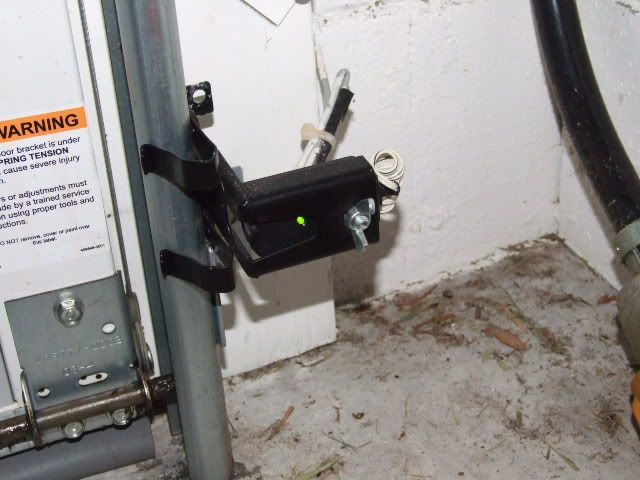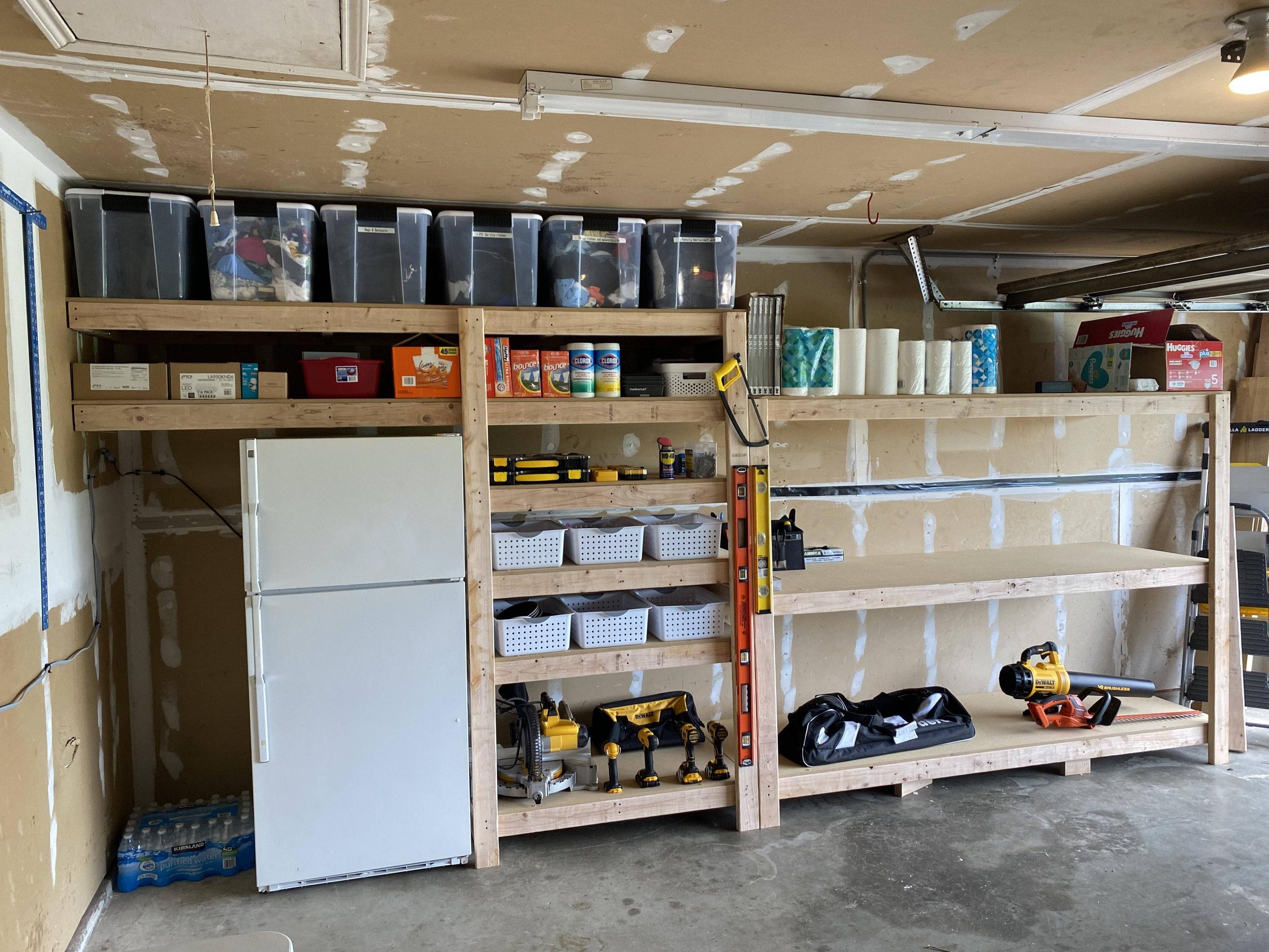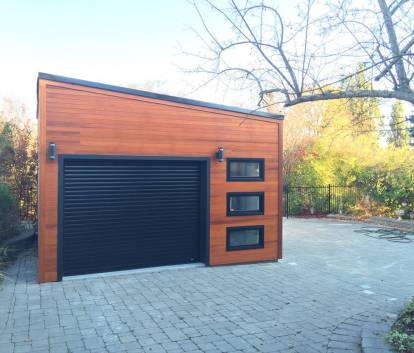
HomeLink repeater: This device boosts your vehicle's HomeLink signal and transmits it directly to your new garage door opener. Installing a HomeLink repeater is easy. It works with most garage door openers. The device boosts the weak signal your car emits, and then retransmits it at a different frequency. It's relatively cheap, which is the best part.
A black box with a plug is the most basic HomeLink repeater. You will need to plug it into a 120 volt polarized outlet to power it. After the HomeLink repeater has been plugged in to the socket, a small LED light will blink in response.
It is important to test the signal strength in order to determine if your system is operating at the high end. If your signal strength is not good, it could be time to rewire. There are many options. You can choose from a simple step stool to professional help. It is worth looking into a repeater converter to make your life easier.

You can test your homelink system under controlled conditions to verify its functionality. A garage door expert could be hired to complete a full overhaul. You should take a photograph before and after you upgrade your garage door, regardless of which solution you choose.
You will need a HomeLink repeater kit if you own a LiftMaster model 855LM or Chamberlain model 855LM. A HomeLink repeater kit is required for older vehicles. These devices are cheap and easy to set up, but they don't work with all garage openers. Many of these devices are not capable of handling higher frequencies in the newer homelink models.
Although the HomeLink repeater doesn't offer many features, it can be a great help with your garage door. It will improve your HomeLink signal so that your garage door opens more efficiently and is less trouble. The HomeLink repeater makes it possible for your garage doors to be opened and closed in a synchronized fashion.
It depends on which model your car is, you might also need to install the HomeLink repeater at your garage door opener to maximize your new technology. This is not always possible but it is worth the effort.

There are several other devices that you can use to check if your homelink system functions at the top end of the spectrum. These products may include a backup battery that can protect you from an electric storm. Some include smart sensors that monitor your home's electrical output, and turn the lights on and off automatically.
FAQ
How much would it take to gut a house and how much to build a brand new one?
The process of gutting a house involves removing all contents inside the building. This includes walls, floors and ceilings, plumbing, electrical wiring and appliances. It is often done when you are moving to a new location and wish to make some improvements before you move in. Because of the many items involved in gutting a house, it is usually very costly. Depending on the job, the average cost of gutting a home is between $10,000 and $20,000
A builder builds a home by building a house frame-by-frame, then adds doors, windows, doors and cabinets to the walls. This is often done after purchasing lots of land. Building a home is normally much less expensive than gutting, costing around $15,000-$30,000.
It all comes down to what you want to do in the space. If you are looking to renovate a home, it will likely cost you more as you will be starting from scratch. You don't need to take everything apart or redo everything if you are building a home. You can design it yourself, rather than waiting for someone else.
What are the top expenses associated with remodeling a Kitchen?
A few key costs should be considered when planning a kitchen remodeling project. These include demolition, design fees, permits, materials, contractors, etc. Although these costs may seem relatively small, if you take them all together, they can quickly add up. These costs quickly multiply when they are added up.
The most expensive cost is probably the demolition. This involves removing old cabinets, appliances and countertops as well as flooring. The drywall and insulation must then be removed. Finally, replace the items.
Next, hire an architect who will draw plans for the space. Next, you must pay for permits to ensure the project meets building codes. The final step is to find someone to carry out the actual construction.
Once the job has been finished, you need to pay the contractor. All told, you could spend anywhere between $20,000 and $50,000 depending on how big the job is. This is why it's important to get estimates form multiple contractors before hiring one.
Planning can help you avoid many of these expenses. You may be able to negotiate better deals on materials or even skip some of the work. Knowing what is required will allow you to save both time and money.
Many people install their cabinets by themselves. This will save them money as they won't need to hire professional installation services. The problem is that they usually spend more money trying to figure out how to put the cabinets in place themselves. A job can typically be done in half the time than it would take for you by professionals.
Another way to save is to purchase unfinished materials. Before purchasing pre-finished materials like cabinets, you must wait until all the pieces are assembled. Unfinished materials can be used immediately by you if purchased. You can always make a change if things don't go as you planned.
Sometimes, it's just not worth the effort. It is important to plan your home improvement projects in order to save money.
What's the difference between a remodel or a renovation?
Remodeling is any major transformation of a room or portion of a bedroom. A renovation is minor changes to a room, or a portion of a bedroom. A bathroom remodel, for example, is a major undertaking, while a new sink faucet is minor.
A remodel involves replacing an entire room or part of a whole room. A renovation involves only changing a portion of a room. Kitchen remodels can include changing countertops, sinks, appliances and lighting. A kitchen remodel could also include painting the walls or installing new lighting fixtures.
Is $30000 enough for a kitchen remodel?
A kitchen remodel costs anywhere from $15000 up to $35000 depending on what you are looking for. For a complete renovation of your kitchen, you can expect to pay over $20,000. If you are looking to upgrade appliances, paint or replace countertops, it is possible to do this for less than $3000.
A full-scale renovation typically costs between $12,000 and $25,000 on average. However, there are ways to save without sacrificing quality. For example, you can install a new sink instead of replacing an old one, which costs approximately $1000. You can even buy used appliances for half of the price of new.
Kitchen renovations take more time than other types. So plan accordingly. It doesn't make sense to start work on your kitchen when you realize half way through that time is running out.
Start early. Start looking at options and collecting quotes from various contractors. Then, narrow down your options based upon price, quality, availability.
Once you have contacted a few contractors, ask them for estimates and then compare prices. The lowest-priced bid isn't always the best choice. It's important that you find someone with similar work experiences who can provide a detailed estimate.
Be sure to take into account all additional costs when you calculate the final cost. These could include labor costs, permits, and material charges. Be realistic about what you can afford and stick to your budget.
You can be open about your dissatisfaction with any of these bids. Tell the contractor if you are not satisfied with the first quote. Give him or her another chance. Do not let your pride stop you from saving money.
What's included in a complete kitchen remodel?
A kitchen remodel includes more than a new faucet and sink. There are also cabinets, countertops, appliances, lighting fixtures, flooring, plumbing fixtures, and much more.
Homeowners can remodel their kitchens completely without needing to do major work. This means there is no need to tear down the kitchen, making the project more manageable for both the homeowner as well as the contractor.
Kitchen renovations include various services, including electrical, plumbing, HVAC, carpentry, painting, and drywall installation. Depending on the extent of the kitchen remodel, multiple contractors may be required.
Professionals with years of experience working together are the best way ensure a successful kitchen remodel. There are often many moving parts in a kitchen remodel, so small problems can cause delays. You should plan ahead and prepare a backup plan for any unexpected situations if you decide to DIY.
How do I determine if my house requires a renovation or remodel?
You should first check to see if your home has had any recent updates. It may be time for a renovation if your home hasn't been updated in a while. On the other hand, if your home looks brand-new, then you may want to think about a remodel.
Second, make sure to inspect the state of your home. It's possible to renovate your home if there are holes in the walls, peeling wallpaper or damaged tiles. It's possible to remodel your home if it looks good.
You should also consider the overall condition of your house. Is your house structurally sound? Do the rooms look good? Are the floors in good condition? These questions are critical when deciding what type of renovation you should do.
Statistics
- 57%Low-end average cost: $26,214Additional home value: $18,927Return on investment: (rocketmortgage.com)
- 5%Roof2 – 4%Standard Bedroom1 – 3% (rocketmortgage.com)
- 55%Universal average cost: $38,813Additional home value: $22,475Return on investment: 58%Mid-range average cost: $24,424Additional home value: $14,671Return on investment: (rocketmortgage.com)
- According to a survey of renovations in the top 50 U.S. metro cities by Houzz, people spend $15,000 on average per renovation project. (rocketmortgage.com)
- Windows 3 – 4% Patio or backyard 2 – 5% (rocketmortgage.com)
External Links
How To
How to Install Porch Flooring
Although installing porch flooring can be done easily, it is not without some planning. It is best to lay concrete slabs before you install the porch flooring. However, if you do not have access to a concrete slab, you can lay a plywood deck board instead. This will allow you to install porch flooring without having to invest in concrete slabs.
When installing porch flooring, the first step is to secure the plywood subfloor. Measure the width of your porch to determine the size of the plywood strips. These strips should be placed along both sides of the porch. Next, nail them into place and attach them to the walls.
After attaching the subfloor to the surface, prepare the area where the porch flooring will be installed. Typically, this means cutting the top layer of the floorboards to size. Next, finish the porch flooring. Polyurethane is the most common finish. Staining porch flooring is also an option. Staining is more straightforward than applying a coat of clear paint. After applying the final coat, you just need to sand down the stained areas.
Once you have completed these tasks, you can finally install the porch flooring. Begin by marking the location for porch flooring. Next, measure and mark the location of your porch flooring. Next, place the porch flooring and attach it with nails.
Porch stairs can be added to porch flooring to increase stability. Porch stairs, like porch flooring are usually made of hardwood. Some people prefer to have their porch stairs installed before their porch flooring.
Once your porch flooring is installed, it is time for the final touches. You must first remove your porch flooring and install a new one. You'll need to clean up the debris. Make sure to clean up any dirt and dust around your home.